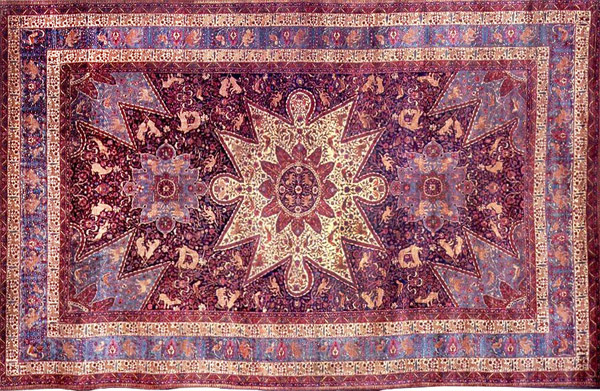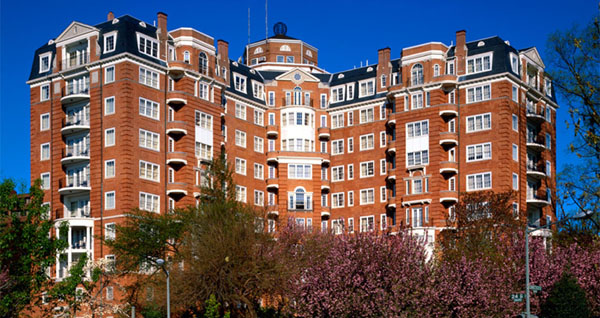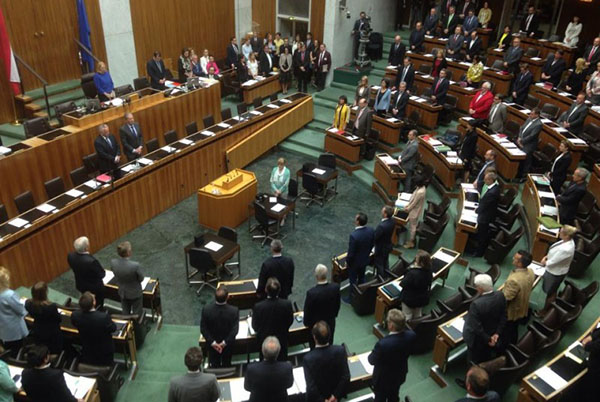Ghazir Rug Will Be Displayed As Part of White House Visitors Center Exhibit From November 18th – 23rd
WASHINGTON, DC – Today, Rep. Adam Schiff (D-CA) announced that the White House will be displaying the Armenian Orphan Rug, also known as the Ghazir Rug, as part of an exhibit at the White House Visitors Center. The exhibit – entitled “Thank you to the United States: Three Gifts to Presidents in Gratitude for American Generosity Abroad” – will showcase the Ghazir rug, as well as the Sèvres vase, given to President Herbert Hoover in appreciation for feeding children in post-World War I France, and the Flowering Branches in Lucite, given to President Barack Obama in recognition of American support of the people of Japan after the devastating earthquake and tsunami in 2010. These three gifts to American presidents will be on display so visitors to the White House and those wishing to see the artifacts can view them.
The Armenian Orphan Rug was woven by orphans of the Armenian Genocide in 1920, and presented to President Calvin Coolidge in 1925 as a symbol of gratitude for American aid and generosity for U.S. assistance during the genocide. The rug, which measures 11’7″ x 18’5”, has over 4,000,000 hand-tied knots and took the Armenian girls in the Ghazir Orphanage of the Near East Relief Society 10 months to weave.
President Coolidge noted that, “The rug has a place of honor in the White House where it will be a daily symbol of goodwill on earth.” The rug – which has been in storage at the White House for decades – will be displayed from November 18 – 23 in the White House Visitors Center. Schiff and the Armenian community have worked with the White House to find a way for the Ghazir rug to be sensitively and appropriately displayed.
“The Armenian Orphan Rug embodies the resilience of the Armenian people through their darkest days and serves as a poignant reminder of 1.5 million Armenians who were murdered in the first genocide of the 20th Century. It also reminds Americans that our government was a central player in efforts to call attention to the plight of the Armenian people and provide relief to survivors,” said Rep. Adam Schiff. “Since first raising this issue with the White House, we have worked to find a dignified way to display the Rug so that Americans can come to see this important artifact, and learn about an important chapter of the shared history of the Armenian and American peoples. I want to thank the White House for working with us, and look forward to seeing the rug displayed at the White House Visitors Center.”
Rep. Adam Schiff and Rep. David Valadao (R-CA) sent a letter along with 31 other Members to President Obama last year urging the Administration to allow exhibition of the rug. The full letter is below, and can be found here, and in the letter they stated: “The Armenian Orphan Rug is a piece of American history and it belongs to the American people. For over a decade, Armenian American organizations have sought the public display of the rug and have requested the White House and the State Department grant their request on numerous occasions. Unfortunately, Armenian Americans have yet to have their requests granted. We urge you to release this American treasure for exhibition.” Since sending the letter, Schiff has continued to urge the White House to find a way for the rug to be displayed.
The White House has confirmed the Display of Ghazir Rug in a statement by NSC Spokesperson Bernadette Meehan:
“On November 18-23, the White House Visitor Center will show an exhibit entitled: “Thank you to the United States: Three Gifts to Presidents in Gratitude for American Generosity Abroad.” Among those gifts displayed will be the Ghazir Rug. The rug, also known as the “Armenian Orphan Rug,” was presented to President Coolidge in 1925 in recognition of the humanitarian assistance rendered by the American people to displaced Armenian orphans.
The rug is made to characterize the Garden of Eden, contains 4 million knots and took 18 months to complete. The rug measures 11.5 feet by 19 feet and is in excellent condition. It was removed with President Coolidge’s personal possessions when he left office in 1929 but was returned to the White House as a gift from his family in 1982. The rug has only been displayed twice since then, and is a reminder of the close relationship between the people of Armenia and the United States.
The other two items in the exhibit are a Sèvres vase commissioned by “Young People of France” that is believed to have been sent to President Hoover in 1930 in appreciation for feeding children in post-World War I France, and Flowering Branches in Lucite which were sent to President Obama in recognition of American support of the people of Japan after the devastating earthquake and tsunami in 2010.
The White House Visitor Center is located at 1450 Pennsylvania Avenue, NW. The center is free and open to the public from 7:30 a.m. until 4 p.m. daily”.










